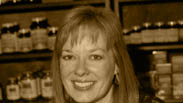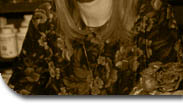(36)
The log of animal
deaths in the "tissue masses and
deaths" book was
considered the primary
data. Animals were allegedly recorded
in this book
as they died. When
the above discrepancies were pointed out
to Searle
personnel, we were
told by Tony Martinez on 4-28-77 that
this log was
compiled from the
body and feeder weight data. When it was
pointed out
that the exact date
of death could not be determined from
the body and
feeder weight data,
or from the observation records, we were
told that the
primary record of
animal deaths was the log organized by
Housing Group in
the "Tissue
Masses and Deaths" book. We were
told that the chronological
log of animal deaths
was made by transferring the data from
the log
organized by housing
group, and therefore the animals being
recorded out
of sequence was not
significant.
We then pointed out
that the chronological record of deaths
also contained
the date fixed "in
toto" and the date autopsied, neither
of which were
found on the log
organized by housing group. If the data
was transferred
from one record to
the other, we wondered where the "date
fixed in toto"
and "date autopsied"
came from. We posed this question to Searle
personnel and we
were finally told on 4-29-77 that the
"fixed in toto" and
"date autopsied"
columns on the chronological record of
deaths was
considered to be
primary data, although it was prepared
simultaneously
with the pathology
sheets, which contained the same data.
Another source of
ante-mortem data was the ophthalmoscopic
examination
record. Dr. Youkilis
performed the eye examinations at periodic
intervals
and recorded his
findings on the ophthalmoscopic record
sheets. These eye
exam sheets were
eventually attached to the pathology records,
and the
results of the eye
exam was incorporated into the Clinical
History of the
animal on the pathology
sheet.
During our review
of the pathology records we noted that
there were no eye
exam sheets for 15
animals, all of which had been included
in the
individual Ophthalmoscopic
Findings in the submission to FDA (Vol.
1,
table 1, pages 122-133).
All of these missing eye exam sheets were
for
animals that had
died during the study. On 6-30-77 we interviewed
Donna
Helms, who told us
that she would make an attempt to find
the missing
records. We advised
her that Dr. R. Stejskal had told us on
6-29-77 that
not all of the eye
exam sheets were attached to the pathology
records, and
that there may be
another file of eye exam sheets somewhere.
(37)
On 7-1-77 Donna Helms
reported that she had found the missing
eye exam
sheets in the K-1
File Room in K-Building. After reviewing
these records
we found that a few
discrepancies still existed. They are
as follows:
1.) It appears that
animal J3CM on page 125, Vol. l of the
submission to FDA
is in error. We could find no records
to substantiate the
listed corneal scar and haziness for
this animals. Also,
the observation records indicate that
J3CM died at week
78. It appears that the correct animal
on page 125 should
be J2CM and not J3CM.
2.) We found eye
exam sheets for H26MF and J29CM, yet the
findings were not
reported in the submission to FDA.
3.) There seems to
be a discrepancy between G16CM and G12CM.
The pathology sheets
for both of these animals report the
identical ophthalmoscopic
finding, yet there is no eye
exam sheet for G12CM,
and only the finding for G16CM was
reported in the submission
to FDA (Vol. 1, p. 125).
During our data review,
we found an internal memo from Dr. Youkilis
to
K.S. Rao, dated 4-28-74.
The text of this memo is as follows: "
-
-
-
-
-
-
Note... This entire
memo was expunged from the delivered
document, by parties
unknown.
-
-
-
-
-
-
-
-
A copy of the above
memo is included in exhibit #72. Dr. Rao
and Dr.
Youkilis are no longer
employed by Searle.
(38)
When an animal spilled
an excessive amount of food, this was
noted on the
observation records
by means of an asterisk in the "appetite/thirst"
column. The asterisk
was also used to denote food spillage
on the
Teletype sheets for
body/feeder weight data. The amount of
food spillage
was not quantitatively
determined by the technicians assigned
to observe,
feed and weigh the
animals, but we were told that they made
an effort to
return spilled food
to the food cups whenever possible. WE
were also told
that food consumption
data for those erats marked with an asterisk
on the
body/feeder weight
sheets was not used in Searle's statistical
analysis of
the data.
The "palpation
record" in the "Tissue Masses
and Deaths" volume shows that
tissue masses were
sometimes excised from the animals. The
record
indicates that a
tissue mass measuring 1.5x1.0cm was excised
from animal
B31HF on 2-10-72.
The record also shows that a "skin
incision over mass"
was performed on
animals C22LM and G25LM on Feb. 10, 1972.
DOSAGE, BODY WEIGHT
AND FOOD CONSUMPTION
DKP levels for the
feeding study were multiples of 100, 200
and 400 times
the estimated human
dose. The levels in g DKP/kg body weight/day
were
0,0.75, 1.5 and 3.0
for the control, low, medium and high
treatment
groups, respectively.
The doses were mixed in the diet as described
in
Calculating Diet
Concentration and Blending of Treatment
Mixtures.
Individual body weights
were recorded weekly for the first four
weeks,
once every two weeks
for the next eight weeks and once every
four weeks
thereafter. The amount
of food consumed was measured every week.
An
automated weighing
system was employed consisting of an Intec
balance and
a Teletype machine.
The Teletype produces a typewritten sheet
and a
machine-readable
punched paper tape. All the typewritten
sheets for the
study were available.
Xerox copies of these sheets were taken
to the
Division of Mathematics
and technical Operations Staff of the
form and
calculated by a computer
program designed by Dennis Wilson, Division
of
Mathematics.
In designing the
computer program it was necessary to make
certain
assumptions on the
handling of the data. One assumption concerned
missing
data, e.g. the empty
feed cups weights were missing for the
"D" housing
group at the 12th
week. Dr. George Clay, Group Leader, CNS
Pharmacology,
Searle and scientific
co-ordinator for the FDA team, was unable
to
determine whether
these animals were omitted from the food
consumption
calculations for
that week, or whether the data for these
animals from


